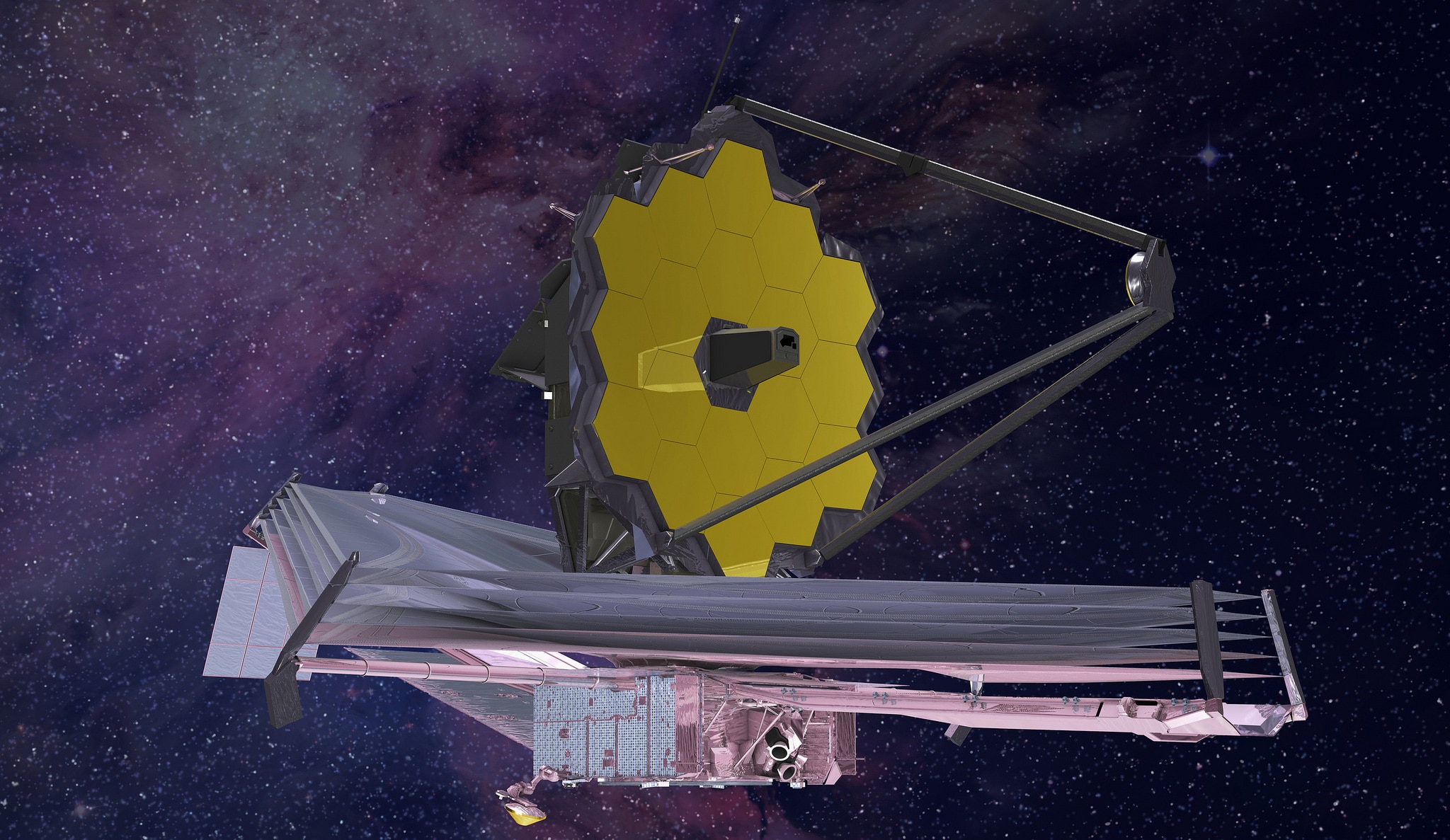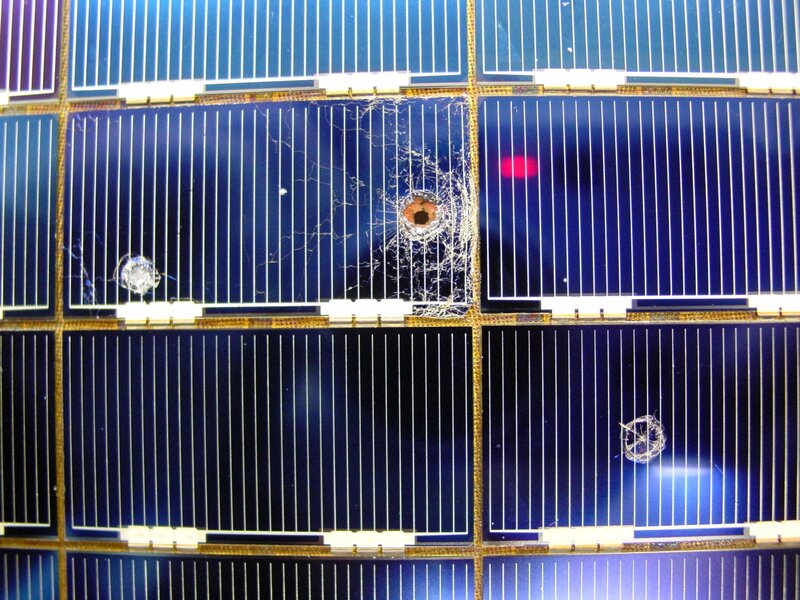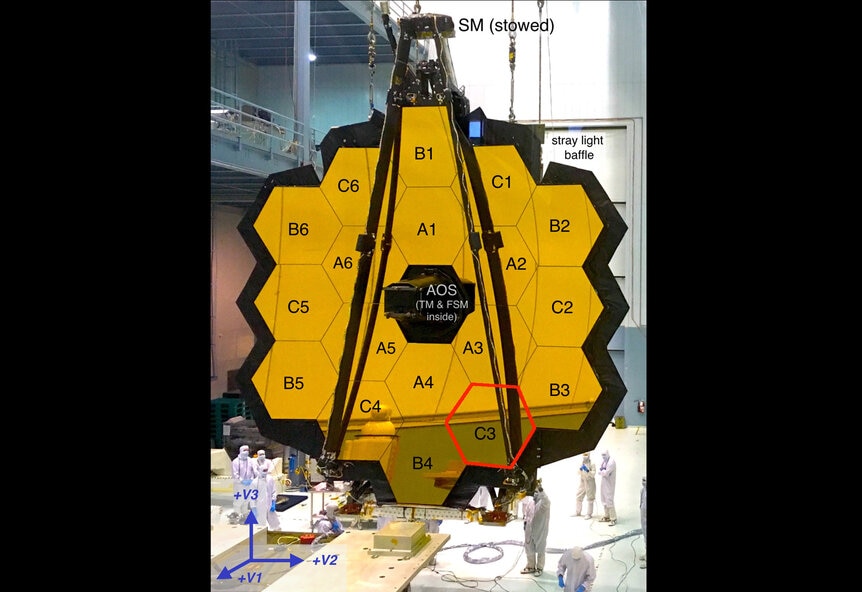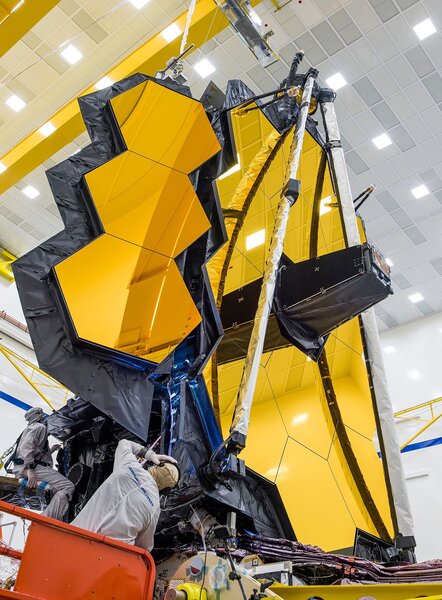Create a free profile to get unlimited access to exclusive videos, sweepstakes, and more!
JWST mirror hit by micrometeoroid, but NASA says damage is minimal
NASA’s huge telescope was hit by a tiny space rock late last month.

Don’t panic! But sometime between May 23 and 25, 2022, the James Webb Space Telescope was hit by a micrometeoroid, a tiny piece of rock that came off a comet or asteroid. The telescope sustained a small bit of damage to one mirror segment, but engineers say it’s fine and the observatory is still well above its mission performance requirements.
OK, phew.
So what happened? Well, space happened. Space isn’t empty, and near Earth there are a lot of small bits of debris flying around, most of which are far smaller than a grain of sand. These are essentially shrapnel blasted off asteroids when they collide with one another, or teeny bits of cometary rock naturally shed as comets warm up near the Sun, their ice turns to gas, and embedded material comes loose.
These bits orbit the Sun on their own, and while small they’re moving at orbital velocities, which can be many dozens of kilometers per second. At those speeds even a rock barely big enough to see packs quite a wallop, and can damage spacecraft.
However, engineers know these things are out there and plan accordingly. Much of JWST is designed to withstand small impacts (scroll to the bottom of that page to get some details). A lot of the important electronics on the observatory’s underside are armored against impacts, for example. The sunshield, a tennis-court-sized structure comprised of five layers of thin Kapton that protects JWST from the heat of the Sun, can withstand small holes and even tears.
However, the mirrors have to be exposed to space and so are vulnerable to impacts. On the ground, long before launch, engineers used simulations to see what impacts could do, and actually used test impacts on samples of the mirrors to see what damage would occur.
Since launch there have been four impacts on the observatory, which is about what you’d expect given its size, the environment — JWST is at the gravitationally stable Earth-Sun L2 point, about 1.5 million kilometers from Earth — and how long JWST has been in space. Still, this impact was bigger than expected, though NASA didn’t say how big they think the impactor was. If I had to guess I’d think it was still pretty small, perhaps less than a millimeter in size, but to be clear that’s pure speculation.
The micrometeoroid hit one of the eighteen 1.3-meter mirror segments, specifically one designated C3. Each segment can be individually controlled with small actuators in the back, which were recently used to adjust them to all act as a single mirror. It’s possible to adjust C3 to minimize the impact of the impact, so to speak, such that the degradation of observational quality is minimized.
You might think a chip in the mirror is catastrophic no matter how small, but the overall mirror itself is immense, 6.5 meters across, so a tiny ding is hardly noticeable in most cases. The biggest concern would not be the loss of light collecting area, but any spurious reflections that could be generated by an irregular pockmark, or how this would distort the shape of objects seen through the telescope. Part of the advantage of JWST is how high resolution it is, how much detail it can see in objects. However, again, engineers are continuing to fine-tune segment C3 to reduce the problem.
This micrometeoroid was what we call a sporadic, or random one. Sometimes they come in swarms, like during a meteor shower. Those are predictable, though, and the observatory can be turned to minimize the effects — Hubble has done this many times, in fact.
Impacts happen, and there will be many more on JWST. This one was bigger than you might expect so early on, but that doesn’t mean there’s an elevated risk from bigger rocks; sometimes a coin just randomly lands tails-up a few times in a row. Hopefully, for some time to come, any more will be smaller and less damaging.
And this won’t deter the release of the first science images, which is planned for July 12, just a month from now. Those images are being taken now, and should be just amazing. Stay Tuned.





























